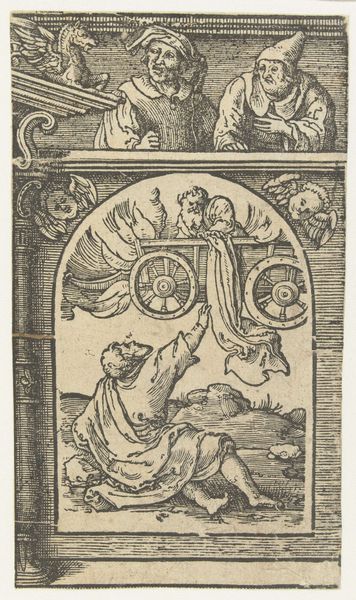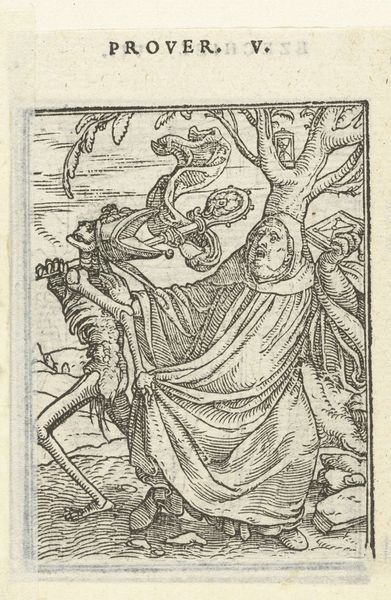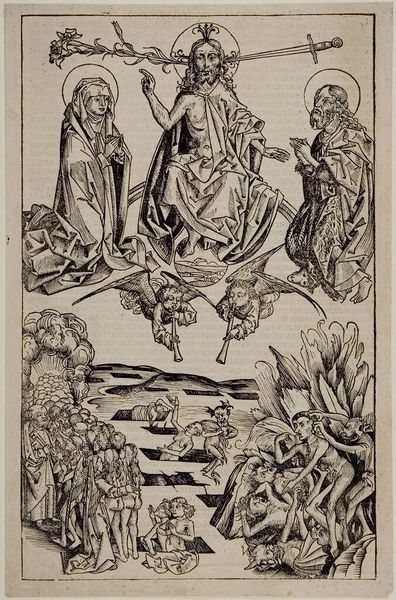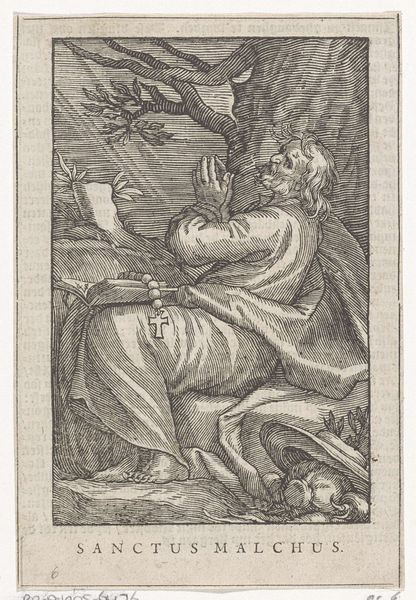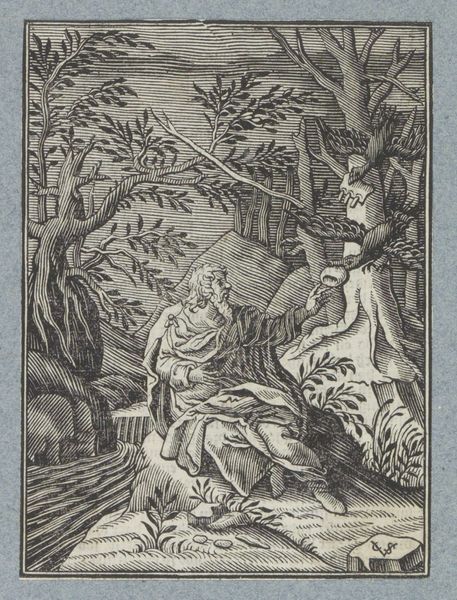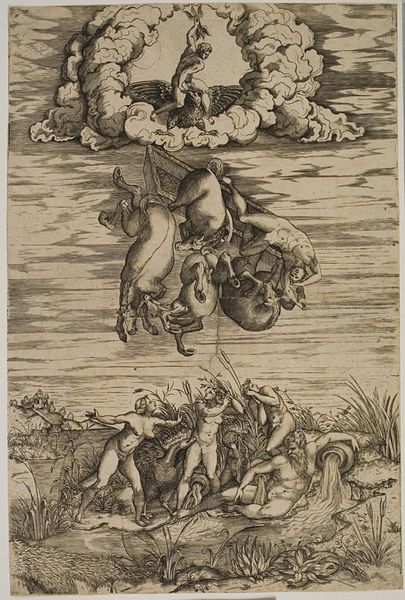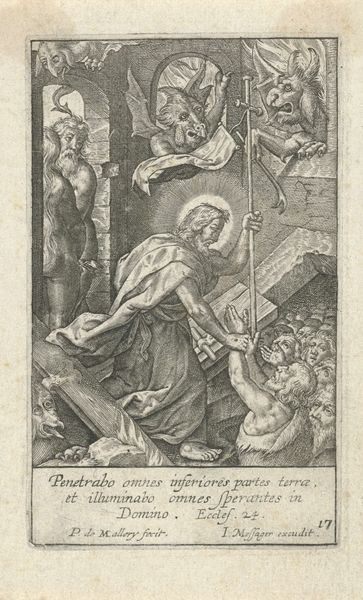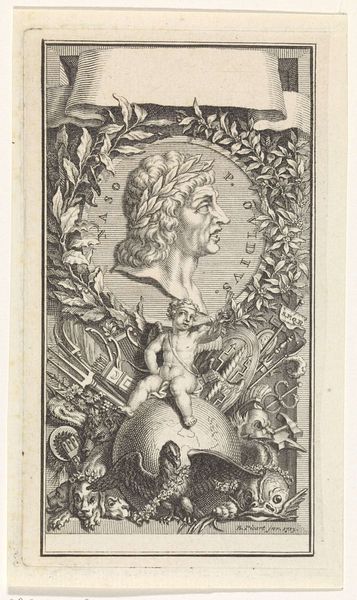
Dimensions: width 54 mm, height 90 mm
Copyright: Rijks Museum: Open Domain
Curator: This engraving, entitled "Tree of Jesse," comes to us from Theodoor Galle and dates to between 1581 and 1633. It’s currently held here at the Rijksmuseum. Editor: My initial impression is one of complex symbolism; it feels very stylized and almost otherworldly, yet contained within a neatly bordered frame. There’s a striking verticality to it with that prominent tree form. Curator: The 'Tree of Jesse' is a common artistic representation of the genealogy of Jesus Christ, depicting his descent from Jesse, the father of King David. You see Jesse reclining at the base, and the tree sprouts from his side, bearing kings and prophets, leading up to Mary and Christ at the very top. Notice how each figure is meticulously rendered in Galle’s signature style of engraving? Editor: It's fascinating to consider the labor and the materials involved in creating these prints. Each line carefully etched, replicated, distributed – it speaks to the broader system of art production and the consumption of religious imagery in that era. How was this print likely used? Curator: Precisely! This print could have been included in a devotional book, or framed for private contemplation. Its dissemination, I suspect, reinforced specific theological interpretations while bolstering Galle’s career as printmaker, and it reflects how images played a powerful role in shaping religious understanding. Editor: Given that Jesse, as a symbol of Jewish ancestry, forms the root, and we see kings along the branches – there’s inherent power dynamics at play. The work clearly propagates a Christian lineage while potentially eclipsing the identities of those it incorporates into its narrative. We should recognize how this piece participates in a longer history of both religious expression and its inherent complexities related to power. Curator: Indeed. By understanding how the engraving was made, how it circulated, and the socio-religious conditions influencing its production and consumption, we get a much richer picture of the artwork itself. Editor: It definitely urges me to consider how these older historical frameworks resonate or clash with modern values. A powerful work, laden with intentionality, calling us to critically analyze not only what we see but the unseen forces shaping our perceptions.
Comments
No comments
Be the first to comment and join the conversation on the ultimate creative platform.
